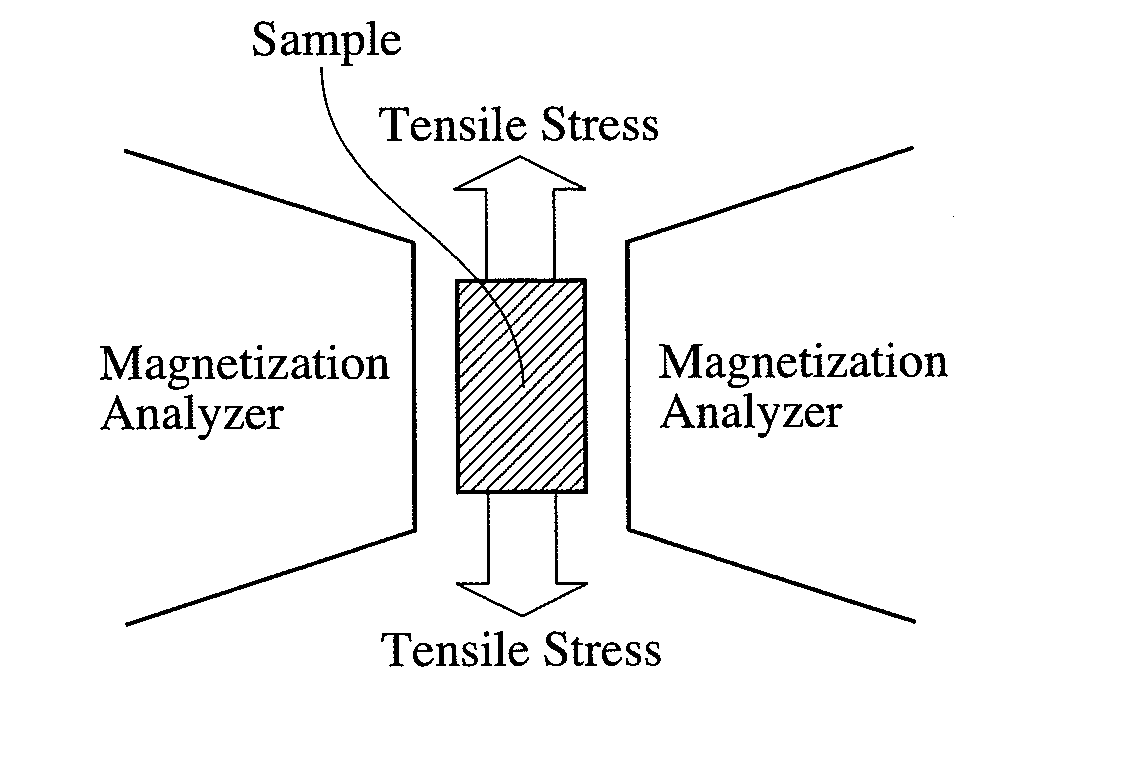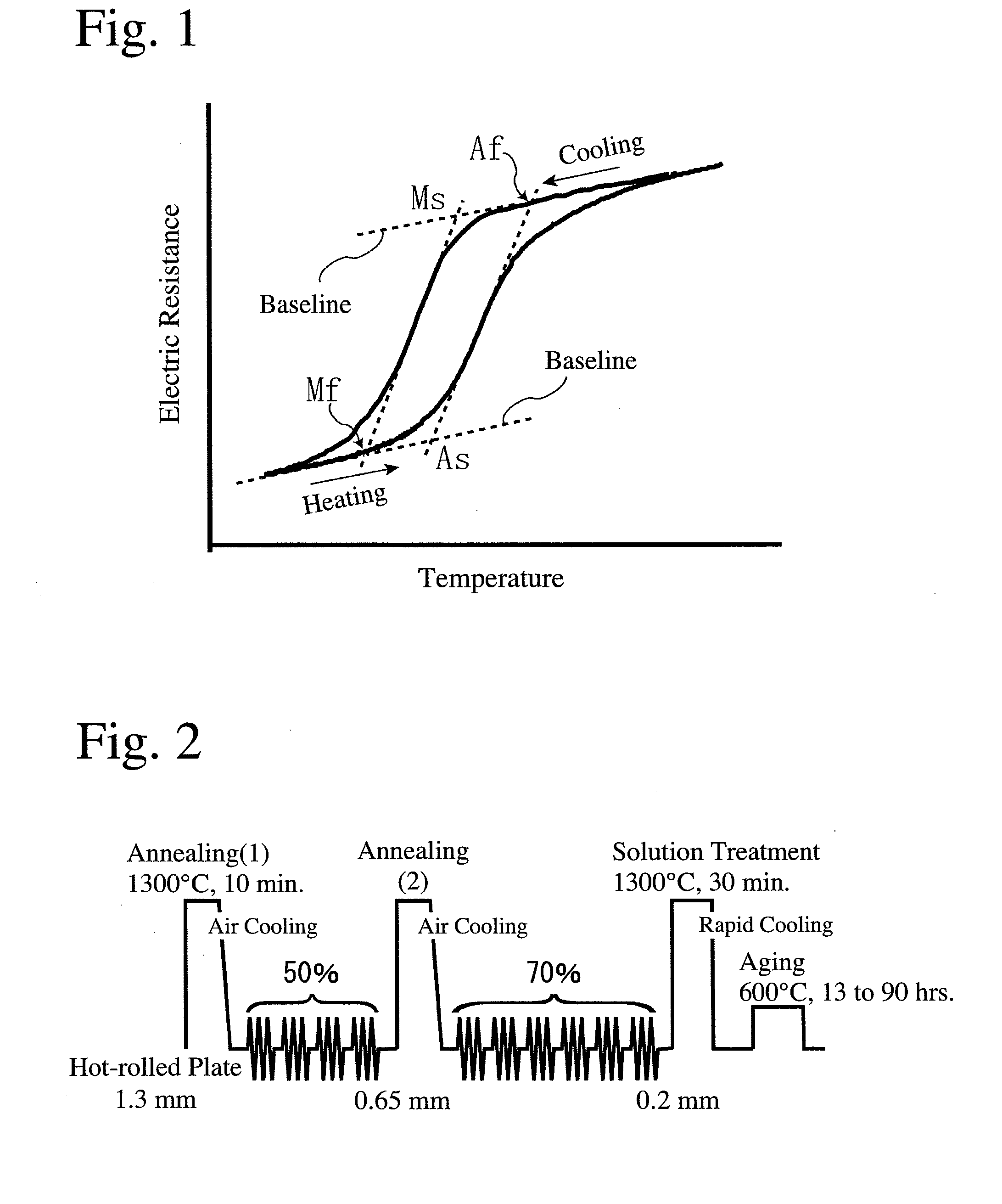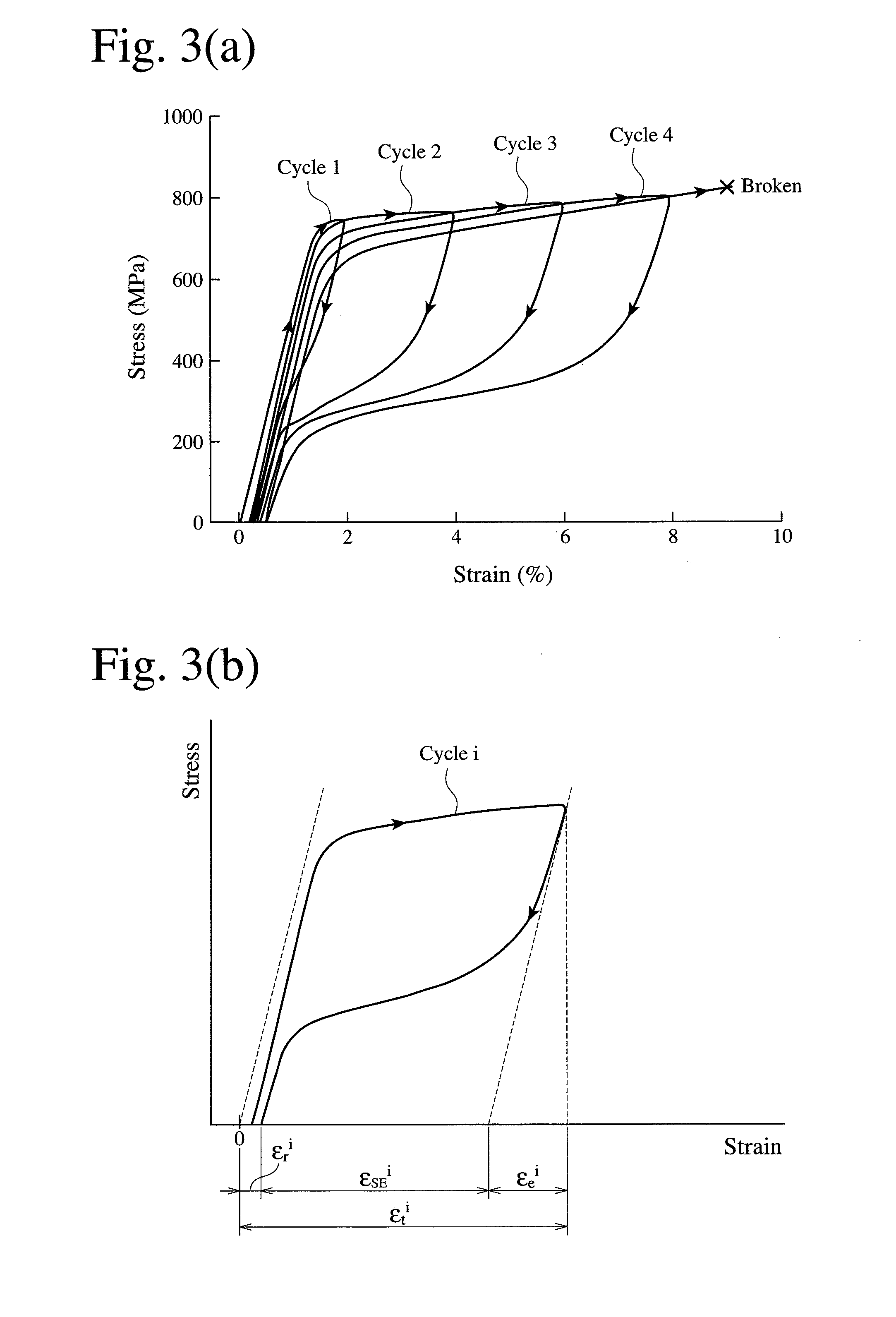Iron-based alloy having shape memory properties and superelasticity and its production method
a technology of shape memory and superelasticity, applied in the field of iron-based alloys, can solve the problems of poor cold workability, high material cost, poor corrosion resistance of cu—zn—al alloys, etc., and achieve excellent shape memory properties, corrosion resistance and magnetic properties, good workability
- Summary
- Abstract
- Description
- Claims
- Application Information
AI Technical Summary
Benefits of technology
Problems solved by technology
Method used
Image
Examples
example 6
[0088]An iron-based alloy having the same composition as in Example 4 was melted, and solidified at an average cooling speed of 140° C. / minute to produce a billet of 20 mm in diameter. This billet was hot-rolled at 1300° C. to a plate of 1.6 mm in thickness. This hot-rolled plate was subjected to first annealing at 1300° C. for 10 minutes, air-cooled, and then cold-rolled plural times to a thickness of 0.8 mm. Thereafter, second annealing, cold rolling, third annealing and cold rolling were conducted under the same conditions to produce a plate of 0.2 mm in thickness. The total working ratio after the third annealing (final annealing) was 50%. The plate was heat-treated at 1300° C. for 30 minutes, and rapidly cooled by quenching in ice water (solution treatment). It was then subjected to an aging treatment at 600° C. for 90 hours, to obtain an iron-based alloy plate having a two-phase structure comprising a γ phase having an fcc structure and a γ′ phase having an L12 structure, whic...
example 10
[0093]An iron-based alloy having the same composition as in Example 4 was melted, and solidified at an average cooling speed of 140° C. / minute to produce a billet of 25 mm each. The billet was hot-rolled at 1250° C. to a plate of 18 mm in thickness. The hot-rolled plate was subjected to plural cycles each comprising first annealing at 1300° C. for 10 minutes, cooling with air and cold-rolling, to produce a plate of 5.5 mm in thickness. The plate was further subjected to plural cycles each comprising second annealing at 1000° C. for 1 hour, cooling with air and cold-rolling, to produce a plate of 0.2 mm in thickness. The plate was heat-treated at 1300° C. for 30 minutes, and rapidly cooled by quenching in ice water. It was then subjected to an aging treatment at 600° C. for 90 hours to obtain an iron-based alloy plate having a two-phase structure comprising a γ phase having an fcc structure and a γ′ phase having an L12 structure, which had shape memory properties and superelasticity....
PUM
| Property | Measurement | Unit |
|---|---|---|
| Temperature | aaaaa | aaaaa |
| Temperature | aaaaa | aaaaa |
| Temperature | aaaaa | aaaaa |
Abstract
Description
Claims
Application Information
 Login to View More
Login to View More - R&D
- Intellectual Property
- Life Sciences
- Materials
- Tech Scout
- Unparalleled Data Quality
- Higher Quality Content
- 60% Fewer Hallucinations
Browse by: Latest US Patents, China's latest patents, Technical Efficacy Thesaurus, Application Domain, Technology Topic, Popular Technical Reports.
© 2025 PatSnap. All rights reserved.Legal|Privacy policy|Modern Slavery Act Transparency Statement|Sitemap|About US| Contact US: help@patsnap.com



